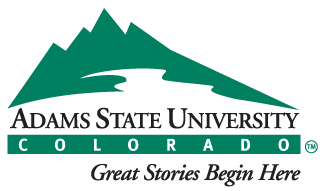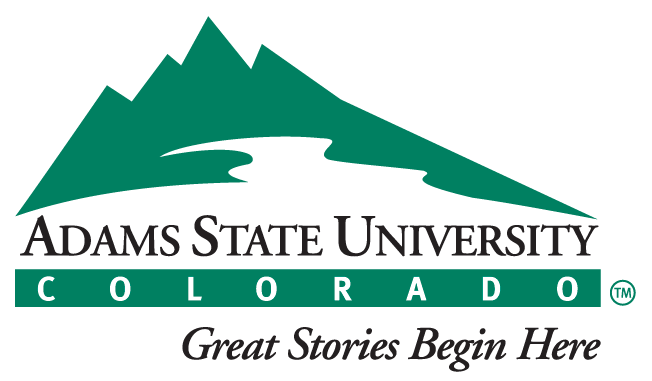John Salazar has been baling since 1:30 in the morning, after confirming the cut alfalfa’s moisture content is 12 percent. If that’s too high, the hay spoils; too low, and it loses nutritional value. You’ve got to make hay while the moon shines, too.
Nine hours later, John is frustrated he had to take time out to fix an oil leak in his Massey Ferguson baler. It’s crucial to bale quickly once the crop is ready, but he also needs to move 211 head of cattle to their summer pasture.
It’s a typical work day in mid-June on the Salazar Ranch, east of Manassa, Colo., where John’s family has lived for five generations. "We learned respect for the land, for our parents and elders. We all have a strong work ethic," he said, referencing his seven siblings. John cultivates six irrigation circles of alfalfa (each about 120 acres) and raises cattle. Other family members farm acreage nearby, but true to the Salazar work ethic, they all pitch in where help is needed. Today, John’s brother LeRoy Salazar is operating another baler. During a brief break, John throws his arm across LeRoy’s shoulders and says, "I learned everything from my big brother." LeRoy grins and shakes his head.
That’s the humility, combined with rural values, John Salazar brought to his post as Commissioner of the Colorado Department of Agriculture in 2011. He resigned that position in 2014, eager to get back to his ranch. "I love to plant and see things grow."
A Democrat, he’d been in public office for a dozen years, first serving as a state representative for District 62 in 2003-04, followed by three terms as a representative of Colorado’s Third District in the U.S. Congress. Covering 29 counties including the San Luis Valley, the Third District is one of the largest and most diverse in the nation.
His resume might be confusing, considering John "didn’t set out to be a politician." He said, "In fact, I don’t like politics. I hate politics, but I love public service; I love to help people. So I reject the word ‘politician.’ I prefer to think of myself as a public servant."
Fighting for water
His commitment to agriculture and his rural community was evident well before he ever ran for office, however. As a member of the Rio Grande Water Conservation District, he helped unite the San Luis Valley to thwart plans by American Water Development, Inc., (AWDI) to buy local water rights and divert 65 billion gallons of groundwater to Colorado’s sprawling Front Range each year. After an eight-year fight, the Colorado Supreme Court ruled against AWDI in 1994.
"If farmers and ranchers in the valley wanted to keep their water, they needed to fight for it. This battle cost San Luis Valley taxpayers millions, but we won," John recalled. "That was really cool. It was like David and Goliath." Had Goliath been victorious, not only would valley agriculture have withered, but wildlife and the Great Sand Dunes National Monument would also have been jeopardized. [The Great Sand Dunes was expanded and designated a National Park and Preserve in 2000.]
Having recently served on the Colorado agricultural commission, he continued to oppose measures to divert water from the valley once elected to the State House of Representatives.
He and Rep. Matt Smith, a Republican from Grand Junction, headed a bipartisan effort to mobilize communities in opposition to Referendum A in 2003, which would have created a $2 billion bonding authority to construct reservoirs.
"The referendum did not specify where the water would come from. We knew if they built those reservoirs, during a drought they would come after the water on farms," he said. "We were just off the fight with AWDI. We visited with every water district in the state, every editorial board, and raised money for advertising. We started with banks in the valley and in Pueblo. Referendum A was defeated in all 64 counties in Colorado. This taught me the value of working together. You can build a team and accomplish more than working by yourself."
John and his younger brother Ken Salazar (then Colorado Attorney General) both ran for U.S. Congress in 2004, with the campaign slogan "Send a Farmer to Congress." Colorado voters did just that, electing John to the U.S. House of Representatives and Ken to the U.S. Senate.
Once on Capitol Hill, John helped to craft the 2008 Farm Bill, which provided assistance to rural communities and agriculture, including a provision to support "specialty crops." He tells critics of the bill’s funding of food stamps, "We have plenty of food, and people need to eat." He also co-sponsored a measure with Senator Hillary Clinton that bolstered broadband service to rural communities.
John served two years on the Appropriations Committee and its subcommittees on Energy & Water Development and Military Construction, Veterans Affairs & Related Agencies. He also served on the Select Committee on Energy Independence and Global Warming. "I was working like a fool, but I loved it. Nothing makes you feel better."
John is proud of work on those committees that resulted in funding for the Veteran’s Administration hospital in Denver and passage of the American Recovery and Reinvestment Act. "During the economic downturn, the government injected money into the economy by creating jobs for badly needed projects, such as higher education and roads." That program was crucial to Adams State in a period of state funding cuts.
He found his biggest challenge in public office came from "extremes of both parties." He explained, "I was member of the Blue Dog Democrats – centrists. We were 52 members in Congress who voted as a bloc and could create legislation that was more palatable to both sides of the aisle. But the extremes of both parties didn’t like it. Thirty-eight of us lost elections in the same year."
Missing the Valley
For six years, John commuted from the nation’s capital to his beloved ranch, where his heart has always resided. "All that time, I was loving and missing the valley," he said. Whether on the ranch or in public office, he is "very meticulous," according to his wife, Mary Lou ’94. "He’s a person who likes to be busy, and he is so busy."
They were married in 1978 and soon had three sons: Jesus, Esteban and Miguel. That was after he spent three years in the U.S. Army, serving in Germany during the Vietnam War. He had enrolled at Colorado State University, but enlisted after drawing a draft lottery number of 5.
"My father was upset, but it did me a lot of good. I grew up in the military. I was not ready for college; my mind wasn’t there," John said. "When I got back, I was ready to go to school." So he entered Adams State’s School of Business and earned a B.S. in business administration in 1982. He values that education to this day. "Tom Gilmore [former president, then professor and dean of the School of Business] is a wonderful friend. I have a great admiration for him. Dr. Chase, who was from Montana and shared the Western heritage, taught me how to write business plans."
John Salazar will receive ASU’s 2016 Outstanding Alumnus Award at the Homecoming Banquet, October 28. He said, "This college has a real special place in my heart."
Reservations for the banquet may be made by calling Gaylene Horning, 587-8110.


